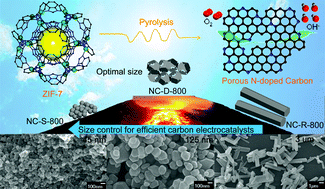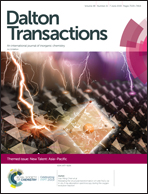Unraveling the relationship between the morphologies of metal–organic frameworks and the properties of their derived carbon materials†
Abstract
Metal–organic framework (MOF) derived carbon materials are promising for energy storage and conversion as they could inherit the advantages of MOF precursors, such as high porosity, large surface area and uniform heteroatom doping. Although the morphologies of MOF precursors have a significant effect on the properties of the resulting materials, up to now, there has been no systematic study on the relationship of the morphologies of MOFs and the properties of their pyrolized carbonaceous materials. Herein, three isomorphous imidazolate-based ZIF-7 materials with different morphologies (sphere, polyhedron and rod shape) have been selected as precursors and carbonized to obtain porous N-doped carbon materials with a tunable morphology, pore features and surface areas. The spherical precursor ZIF-7-S with an average size of 45 nm was cross-linked to form carbon networks during pyrolysis, while the rod shape of ZIF-7-R (0.6 μm in diameter and 3 μm in length) was well retained in the NC-R-800 material. NC-D-800 derived from polyhedral ZIF-7-D (125 nm) was constructed by partially interlinked particles and interparticle mesopores were formed. NC-D-800 has the highest Brunauer–Emmett–Teller (BET) surface area of 538 m2 g−1 of the three carbon materials. Moreover, NC-D-800 shows superiority over NC-S-800 and NC-R-800 in the oxygen reduction reaction. This work discloses that the morphologies of MOF precursors could indeed affect the morphologies, and physical and catalytic properties of their corresponding carbon materials.

- This article is part of the themed collection: New Talent: Asia-Pacific


 Please wait while we load your content...
Please wait while we load your content...